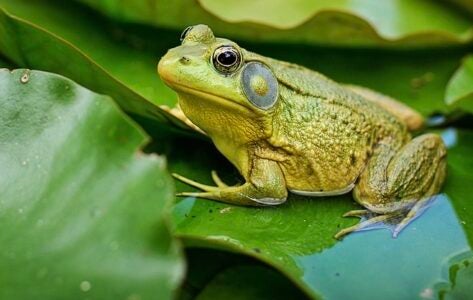Frog Power: Green guardians of the local ecosystem
Published 10:52 am Friday, June 28, 2024
|
Getting your Trinity Audio player ready...
|
If you’ve ever explored the beautiful mountains and forests of Western North Carolina, you’ve likely heard the cheerful chorus of frogs. Who doesn’t love the sound of bullfrogs with their deep voices?
But these tiny amphibians do far more than provide pleasant nature sounds. They play a vital role in keeping nature in balance and their well-being is closely tied to the health of us humans. Let’s find out why. But first, what’s the difference between frogs and toads?
While frogs and toads are both amphibians and are both born in the water, toads are actually a subspecies of frogs. This means all toads are considered frogs, but not all frogs are toads. Why does it have to be so confusing?
However, there are some key differences between the two. Frogs tend to have moist, slimy skin and longer legs that are more suited for swimming, and they often live in water. Toads have drier, bumpier skin and shorter legs more adapted for living on land. But today, we are talking about frogs.
Frogs start as eggs that hatch into tadpoles before metamorphosing (now that’s a big word) into four-legged adults. This incredible transformation is just one of the many wonders of these unassuming creatures.
With their ability to jump over 20 times their body length, frogs are true tiny athletes. For a frog that’s 4 inches long, that’s like a 6-foot person jumping 120 feet! Now that’s impressive!
Beyond their jumping prowess, frogs serve as nature’s pest control service. A single frog eats thousands of insects like mosquitoes, flies and beetles each year, which, of course, helps control these insects. And frogs help feed animals further up the food chain, like snakes, raccoons and birds.
Frogs are also considered an “indicator species,” meaning their health and population numbers reflect the overall condition of their environment. So protecting frog habitats, like the beautiful wetlands, creeks, and forests of WNC, is crucial. These special ecosystems filter our water and air. Declining frog numbers can signal issues like pollution or disease, which affects all of us.
Some frog species can even survive freezing solid. In the winter, the frog becomes partially or completely frozen as temperatures drop below freezing. The frog quits breathing, and its heart will even stop. Then, in the spring, it slowly thaws out and comes back to life. A superpower, for sure!
Here’s a question—have you ever thought of frog skin? Probably not, except it’s slimy. But here’s one of the coolest things about them. Frogs periodically shed their skin, sometimes even daily.
Bullfrogs, for example, shed their skin weekly, using their strong hind legs to pull the skin off over their head, similar to how we pull off a shirt. Then, they eat their skin in one of nature’s most efficient recycling processes. Why? Well, the skin has all kinds of nutrients; by eating the skin, they eliminate any evidence that could attract predators. Pretty clever!
Another remarkable fact about frogs is their ability to absorb water and nutrients through their skin, which must stay moist for them to breathe properly. This makes them highly vulnerable to environmental threats like habitat loss, climate change, pesticide and chemical pollution, and disease, which is why most frog species are in decline.
The next time you hear their symphony in our WNC hills, remember these tiny leapers play an oversized role. They are environmental superheroes deserving of our wonder – and our protection of the clean habitats they need to survive and thrive.

What’s the difference between a frog and a toad?
Loti Woods is co-founder of Champions for Wildlife, a local nonprofit organization whose mission is to inspire kids to be champions for wildlife through the power of art and education. To learn more, visit www.championsforwildlife.org






